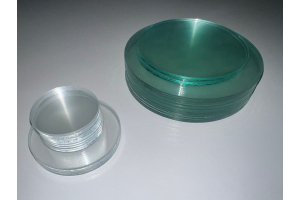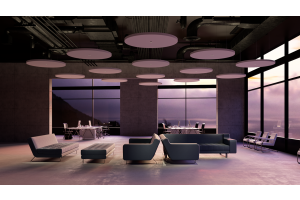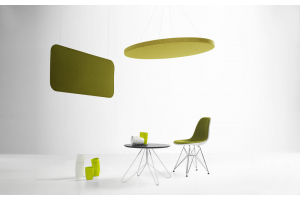
By Luca Masella, M.S.

When it comes to noise management in building design, active noise cancellation, passive noise cancellation, and noise reduction are all options.
Active Noise Cancellation (ANC)
In a nutshell, active noise-cancellation is based on the principle of wave phase cancelation.
Waves, such as sound, that are 180 degrees out of phase, or inverted from one another cancel out when added together. Think of it as adding -1 to 1, and you end up with zero. The idea with noise cancellation is to record the background noise, invert the noise signal to create “anti-noise”, and then add it to the output signal which includes music. The anti-noise signal cancels out the actual background noise by the time it reaches the human ear. Nowadays this technology is pretty spread out for personal use but it becomes complex to integrate into large spaces with multiple rooms.
Passive Noise Canceling (PNC)
Passive noise canceling is an approach that blocks sound. This is typically achieved in the physical design of a product or environment. We could define passive noise canceling as all the procedures to control and cancel the noise without getting technology involved. For example, PNC can be achieved through the use of isolating materials or acoustic panels.
When headphones, earbuds, earphones, or in-ear monitors block outside sounds, this is known as passive noise isolation. Outside ambient noise is blocked from entering the ear canal because earbuds are shaped to the exact shape of the ear opening. It is called passive noise cancelling, but a more precise description would be to call it noise blocking or noise isolating.

According to professor Dan Pfeifer of Middle Tennessee State University's Department of Recording Industry, a good blend of ANC and PNC is ideal to regulate noise in an area. In the future, professor Pfeifer predicts technical advances such as speakers and microphones made of materials so thin that it will be possible to print them onto wallpaper and cover the entire room from every angle. If one can modulate the sound in three dimensions you will be able to, not just lower the decibel of the noise, but to totally cancel it.
A method that will be available in the near future is to use PNC to isolate a room into smaller parts, and then use ACN to cancel the noise in those smaller areas. This method is now used in a large number of earbuds. They are shaped to block sounds from outside (PNC) while also using ANC technology to eliminate any remaining outside noise.
Noise Reduction
The current alternative to noise cancellation is noise reduction, which is carried out by masking the noise with another noise. This noise is called colored noise and each color has a different characteristic.





